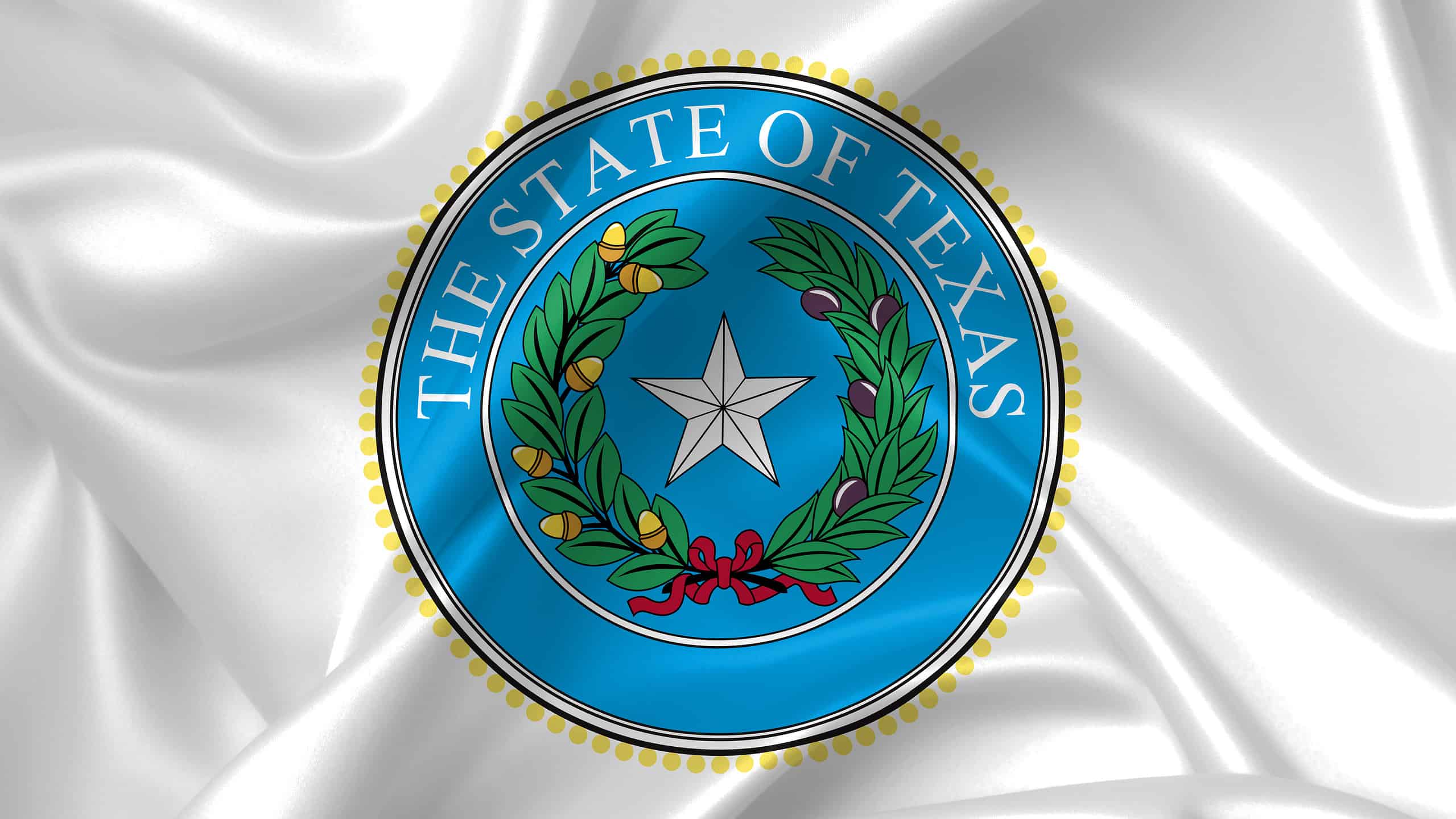Rife with intriguing history, unusual challenges, and a long line of resistance, Texas lends itself to the nickname of the Lone Star State exceptionally well. With Spanish missionaries the first non-natives to settle into the area, founding San Antonio in 1718, the state began to take shape to eventually become what it is today. Sparsely populated, even now compared to the sheer mass of the state, Texas remains a thriving “wild” state with thousands of animals and nearly 30 million residents. The state wasn’t always a state, though, but went through many transformations that brought it where it is today.
A Brief History of Texas
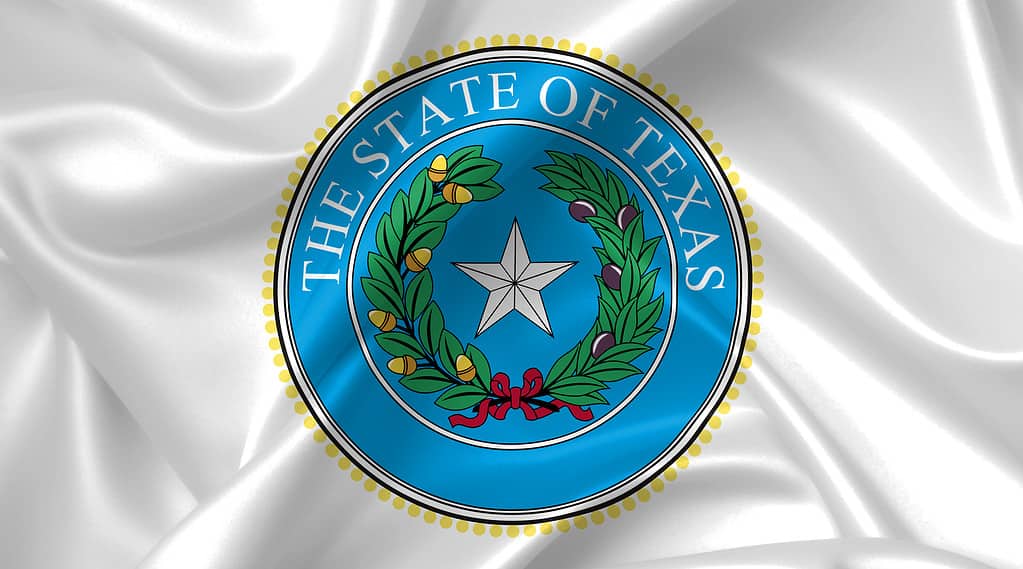
The Texas state seal remains nearly the same as the original from nearly 200 years ago.
©Salah Ait Mokhtar/Shutterstock.com
As long as 37,000 years ago, West Texas Native Americans settled into the land, living in camps together as hunters of wild game in the area. Other parts of Texas with more fertile soil welcomed Native Americans with fresh vegetables and farming that encouraged permanent villages. Eventually, these peoples of the East side of Texas formed alliances for protection and became known as the Caddo Confederacy.
When the first European settlers came in 1528, the area was still settled sparsely by Native Americans but their influence of culture was widely felt. In another 200 years, more than 30 expeditions through Texas had been led by the Spanish, with eventual settlement of a military post and mission (the Alamo) in San Antonio. In the early 1800s, the United States purchased the Louisiana Territory from France, staking claims as far west as the Rio Grande River. More settlers flooded in, including Moses Austin, for whom the state capital is named.
Mexican approvals of the grant to settle the area encouraged more settlers to flow in, but unrest quickly rose, resulting in the coup by Antonio Lopez de Santa Anna. Hoping for relief from restrictions by the United States government, Texans took arms and staged a rebellion. The famous Battle of the Alamo in 1836 led to both Mexicans and Anglo-Texans, as well as others, establishing the Republic of Texas. Short-lived, though, the Republic survived just shy of ten years before being “taken back” into the United States after further battles (including the Mexican-American war fought over disputed territory). Texas officially became a state in 1845, becoming the 28th state of the Union.
Texas State Overview

The Lone Star Flag is a symbol of Texas.
©iStock.com/leekris
You might think of rodeos, the Alamo, and Tex-Mex food when the Lone Star State comes to mind, but the state is so much more than just tacos and bucking broncos. For sheer land mass, Texas is the largest state (behind Alaska), and the second largest population-wise after California. Big skies, two national parks, 80 state parks, and a plethora of cultural experiences draw in more than 250 million tourists annually.
While visiting the state, some of the deepest, darkest nights for stargazing are possible, as well as some of the most diverse wildlife spotting.
The Texas Seal: State Motto
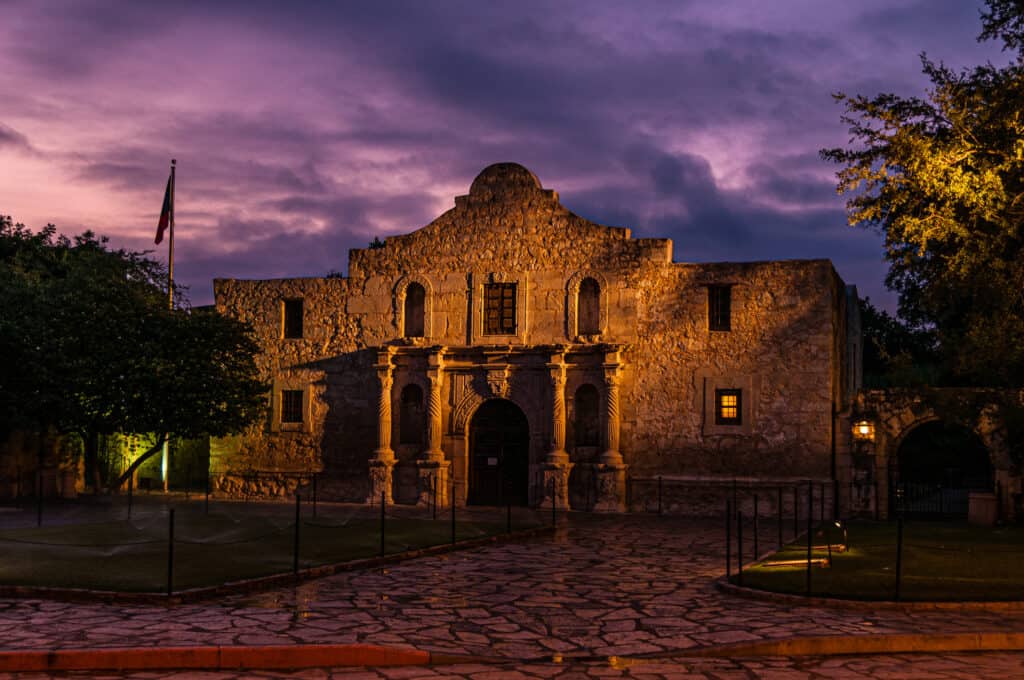
Though it once was the state motto, “Remember the Alamo” has been replaced with the simple word “Friendship.”
©iStock.com/Greg Meland
A single word holds the title for the state motto of Texas: Friendship. The word was adopted in 1930 and many believe it’s because the name of the area in local Native American language “teyshas” or “thecas”, when pronounced in Spanish, means making allies or friends.
Formerly, the motto was “Remember the Alamo,” but the motto changed when the region shifted from being a Republic to the state of Texas in 1845.
The Texas Seal: Imagery
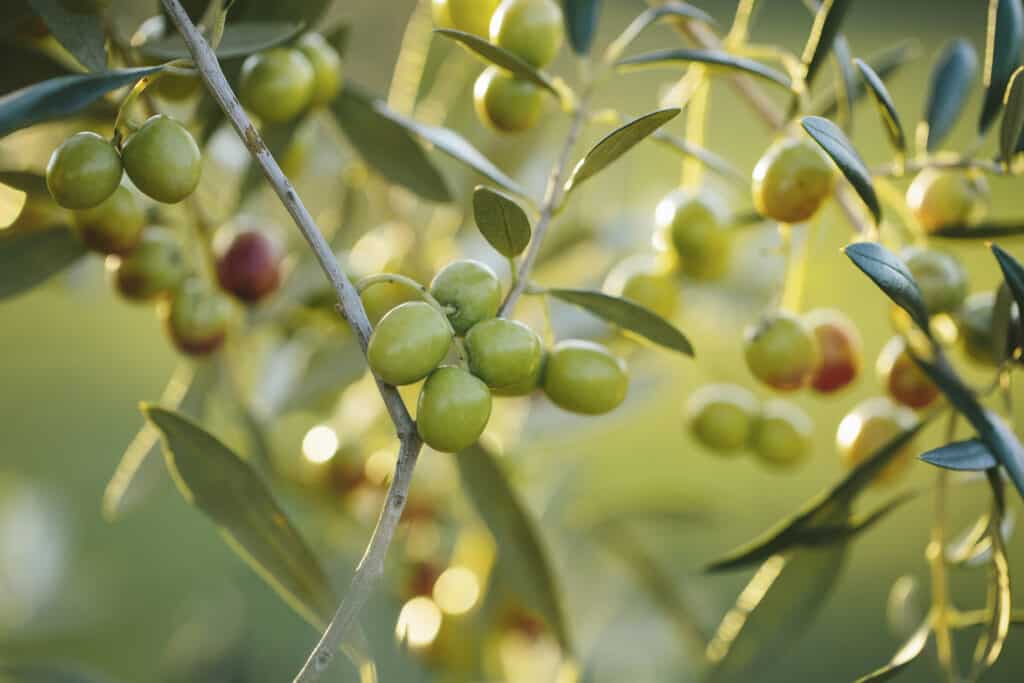
Olive branches remain ubiquitous across the planet as a symbol of peace.
©iStock.com/Almost Green Studio
The many layers of Texas history make for an interesting history of the state seal, as well. In fact, there have been several official seals over the decades, with influence from Spain, Mexico, and state officials, plus, of course, the Republic of Texas holding its own seal.
The five-pointed star of the Republic of Texas remains part of the Texas state seal today, symbolizing the memory of the brief period as its own sovereign state. The star is the central image of the seal. Live oak and olive wreaths also adorn the seal, and it’s believed that these came about because of the former Mexican seal. The live oak branch bears acorns in the official seal of today, with small black olives on the olive branch. Strength and peace, respectively, are symbolized by these two branches.
Texas State Seal: Design History

Black and white older version of the seal of Texas
©Morphart Creation/Shutterstock.com
A uniform design for the Seal of Texas involves a front (obverse) and back (reverse) side each. The original five-pointed star that remains represented on the seal came into the design in 1836 when Washington on the Brazos convened at the Convention of 1836. The declaration of independence from Mexico was served and 10 days later, the convention adopted the resolution to create the “peculiar” emblem to represent the new Republic. The five-point star was chosen, in either silver or gold, to represent the fine qualities of good citizenship: righteousness, prudence, broad-mindedness, loyalty, and fortitude.
Adding the word “Republic of Texas” to the seal came later that tear, with a follow up of the design to be circular in shape. A few years later, in 1839, the Third Congress of the Republic of Texas modified the seal by adding a live oak branch representing strength and the olive branch for peace. The design then is basically what the current day design is, save for minor details. The most notable detail change is the word “Republic” being changed to “State” on the seal.
Eventually, the design was officially implemented in 1992 to create a single, uniform design.
Other Symbols and Emblems of the Great State of Texas

Perhaps the most well-known state flower, bluebonnets of Texas.
©Dean Fikar/Shutterstock.com
Of course, the state seal isn’t the only symbol of the Great State of Texas. Like others in the nation, the Lone Star State has chosen state animals, gemstones, and more to symbolize the character and diversity of the state.
- State flag, The Lone Star Flag. Blue stands for loyalty, white for purity, and red for bravery. The single or lone star stand for “unity as one for God, state, and Country.” Adopted 1839.
- Nickname: The Lone Star State
- State flower: Bluebonnets, adopted 1901
- State tree: Pecan tree, adopted 1906
- State dish: Chili, adopted 1977
- State bird: Northern mockingbird, adopted 1927
- State insect: Monarch butterfly, adopted 1995
- State dinosaur: Sauroposeidon proteles, adopted 2009
- State fish: Guadalupe bass, adopted 1989
- State mammal (Small): Nine-banded armadillo, adopted 1927
- State mammal (Large): Texas longhorn, adopted 1995
- State mammal (flying): Mexican free-tailed bat, adopted 1995
- State reptile: Texas horned lizard, adopted 1993
- State gemstone: Texas blue topaz, adopted 1969
- State stone: Petrified palmwood
- State vegetable: Texas sweet onion, adopted 1997
Some of the Most Common Animals Spotted in the Wild in Texas
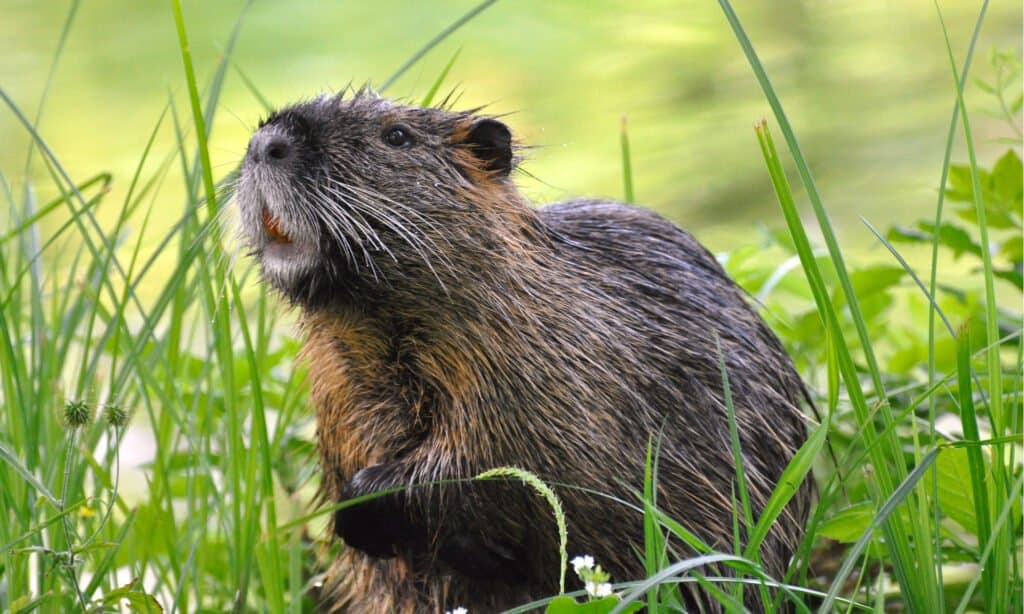
Nutria are known for their orange-stained front teeth. You’ll potentially spot these critters in Texas in the wild.
©Sonja Guijarro/Shutterstock.com
Saying “abundant wildlife” in Texas is putting it mildly. Literally home to thousands of different types of animals, birds, marine life, and insects, Texas is full of intriguing critters. Some of the most commonly seen animals and birds you’ll spot while visiting could include:
- Armadillo
- Beaver
- Bobcats
- American black vulture
- Turkey vulture
- Opossums
- Raccoons
- Brown bats
- Coyotes
- Feral hogs
- Free-tailed bats
- Hoary bats
- Nutria
- Eastern grey squirrels
- Eastern cottontail rabbit
- Skunks
- Western red bats
- White-tailed deer
- Alligators
- Broad-banded water snakes
- Coral snakes
- Eastern hognose snakes
- Texas rat snakes
- Water moccasins
- Fort Bend County pit vipers
- Barred tiger salamanders
- Blanco blind salamanders
- Bronze frogs
- Houston toads
- American avocets
- American oystercatchers
- Arctic peregrine falcons
- Attwater’s prairie chickens
- Black-chinned hummingbirds
- Black-capped vireo
- Bald eagles
- American kestrels
- Black-crowned night herons
- Downy woodpeckers
- Chimney swifts
- Burrowing owls
- Elf owls
- Muscovy ducks
- American gar
- American eel
- Big Bend gambusia
- Bigmouth buffalo (fish)
- Black drum
- Chain pickerel
- Blacktail shiners
- Bluegills
- Flathead catfish
- Red snapper
- Blue crabs
- Eastern oysters
- Fiddler crabs
- Lightning Whelk
- Badgers
- Black bear
- Black-tailed prairie dogs
- Black-footed ferret
- American parastrelle
- Bottlenose dolphins
- Brazilian free-tailed bats
- California myotis
- Elk
- Evening bats
- Gray wolf
- Mountain lion
- Mountain sheep
- Ocelot
- River otter
Thank you for reading! Have some feedback for us? Contact the AZ Animals editorial team.

